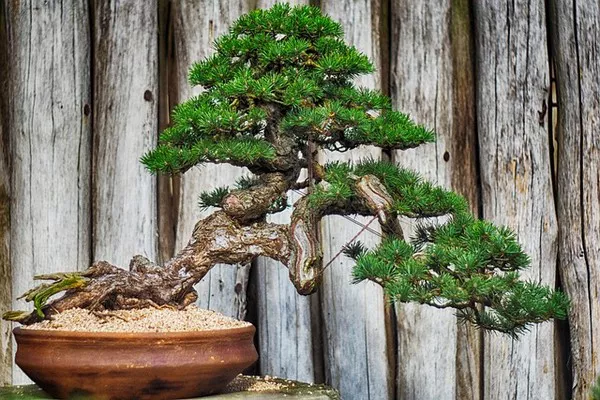Bonsai, the ancient art of cultivating miniature trees, has captivated gardeners and horticulturists alike for centuries. While the appeal of these beautifully sculpted trees lies in their compact size, some enthusiasts may wish to explore methods to make their bonsai tree grow bigger while maintaining its aesthetic charm. Achieving significant growth in a bonsai tree requires a delicate balance of careful planning, attentive care, and understanding the tree’s unique needs. This article will provide a comprehensive guide to help enthusiasts foster healthy growth and create stunning, larger bonsai specimens.
Selection of Suitable Bonsai Species
The first step in fostering significant growth in your bonsai tree is to select a species that is naturally conducive to enlargement. Certain species are more amenable to bonsai techniques that promote size, such as ficus, Japanese maple, and Chinese elm. These species typically have more substantial trunks and respond well to pruning and styling, which are essential elements for achieving growth in bonsai.
Proper Pot Selection
The choice of pot can significantly impact the growth of your bonsai tree. To encourage growth, it is recommended to use a larger pot that provides more space for the root system to expand. However, be cautious not to select a pot that is too big, as this may hinder growth and lead to issues with water retention. A balance between providing adequate space and proper drainage is key.
Soil Composition and Nutrients
The soil composition plays a crucial role in promoting healthy growth in bonsai trees. Use a well-draining soil mix that allows water to flow freely while providing essential nutrients. A balanced soil mixture of akadama, pumice, and lava rock is commonly used for bonsai cultivation. Additionally, regular fertilization during the growing season will supply the tree with essential nutrients necessary for vigorous growth.
Pruning and Styling
Pruning and styling are fundamental practices in bonsai cultivation, and they play an essential role in encouraging growth. Strategic pruning helps to redirect the tree’s energy to specific areas, stimulating new growth and increasing branch density. Pruning also helps maintain the desired shape of the tree while removing any unhealthy or weak growth.
Wiring Techniques
Wiring is a technique used to shape the branches and trunk of a bonsai tree. It helps achieve the desired form and encourages controlled growth. When wiring, it is essential to avoid damaging the tree’s bark and to regularly check the wires to prevent them from cutting into the branches as the tree grows.
Repotting
Regular repotting is essential for promoting growth in bonsai trees. As the tree grows, the root system needs space to expand, and repotting provides an opportunity to prune the roots and refresh the soil. Repot the tree every two to three years during the spring, just before the growing season begins. This practice encourages the development of new feeder roots and prevents the tree from becoming root-bound.
Watering Techniques
Proper watering is critical for the health and growth of bonsai trees. Overwatering can lead to root rot, while underwatering can cause the tree to weaken and inhibit growth. The key is to maintain a consistent watering schedule and adjust it based on the tree’s specific needs, which can vary depending on factors such as climate, soil, and the tree’s stage of growth.
Sunlight and Temperature
Sunlight is a primary driver of growth in any plant, including bonsai trees. Ensure that your bonsai receives the appropriate amount of sunlight for its specific species. While some species thrive in full sun, others may require partial shade. Additionally, temperature fluctuations can impact growth, so protect your bonsai from extreme temperatures to maintain optimal conditions.
Disease and Pest Control
Keeping your bonsai tree healthy and free from diseases and pests is crucial for promoting growth. Regularly inspect the tree for any signs of infestation or disease, and promptly address any issues that arise. Using organic and natural pest control methods is preferred to avoid harmful chemicals that could affect the tree’s overall health.
Patience and Long-Term Vision
Last but not least, fostering significant growth in a bonsai tree requires patience and a long-term vision. Bonsai cultivation is a slow and deliberate process, and noticeable changes in size may take several years to manifest. Enjoy the journey and take pleasure in the artistry of shaping and nurturing your bonsai as it matures into a larger and more stunning specimen.
Conclusion
Growing a bonsai tree to a larger size is a rewarding endeavor that demands dedication, attention to detail, and an understanding of the tree’s unique needs. By selecting the right species, providing suitable pots and soil, utilizing pruning and styling techniques, and employing proper care practices, enthusiasts can encourage healthy growth while maintaining the intrinsic charm of bonsai aesthetics. Remember that each bonsai tree is a living work of art, and the journey to fostering growth is a fulfilling and rewarding experience for any avid bonsai enthusiast.


